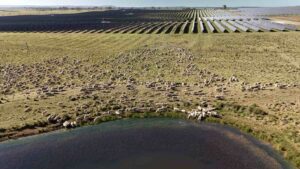The Alternative Energy Association has posted an elaborate array of facts and figures which seem to point to the conclusion that smaller is economically better when it comes to roof top solar PV systems.
This conveniently coincides with one of the last remaining Liberal policies, being one million solar roofs. Just when the cowboys had all but left the industry, the specter of $1000 rooftop PV systems has been reignited, a volume business where quality comes last, STC’s* hit the floor and A Current Affair gets more segments.
The truth about these facts and figures is that they provide only a snapshot view of today, it relies on assumptions and does not look anywhere toward the future. It belies the fact that the potential for a major shift in generation and distribution is upon us.
Australia, particularly with it’s concentration of population – and solar installations – on the eastern seaboard, has the opportunity to revolutionise electricity supplies, but is stuck in what seems to be a policy vacuum. Solar will never be an attractive renewable source without some form of storage or time-shifting.
The policy makers in Germany, which has an east west footprint (and therefore enjoys a more even spread of solar power), have embraced solar so well that they are only now experiencing the issues that we have with the sudden shut down of solar power in the late afternoon.
So what do these smart people do? They subsidize storage, to the tune of 500euro/KWH. Imagine if every house had 10KWH of storage, the grid would be almost redundant; the 51% portion of electricity bills could be slashed to help the people who can’t access solar.
By adding even more small PV systems and still ignoring the issue of evening peaks, we are only going to make a bad situation worse, to the detriment of the industry and the community. It doesn’t matter if we have bucket loads of gas to fire peaking power plants, unless they are located in your neighborhood park, we are still going to get stung for more and more “peak” infrastructure that is used a fraction of the year.
Energex in Queensland is currently offering rebates of up to $500, for the ability to augment peak demand for air conditioners; one has to wonder however how long a lump sum payment will ensure a customer will allow their Air Conditioner to be switched off remotely when they want to use it the most.
Ultimately, Time-Of-Use metering must prevail, as intended by the NEM legislation. Only then will customers have real control of energy prices.
But there is one condition that will need to be met for TOU to work, that is that it reflects actual costs, and not be used as a candle wick to produce income streams unrelated to energy supply. This seems to be the case in NSW where Shoulder and Peak are identical rates.
Storage can then truly make an impact and take commercial leaps and bounds. Even non-solar owners can charge their storage device off-peak (which may well be mid-afternoon when there is excess solar) for use when prices spike in the evening. The death spiral for distribution is in full swing, the problem is the powers to be are trying to reverse the causes, not embrace them and steer the Australian electrical industry on a new, innovative course.
Rob Campbell is a self-described champion of distributed energy storage and the head of a storage manufacturer.
* STCs – certificates










